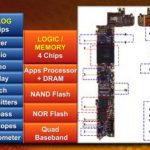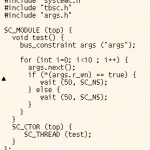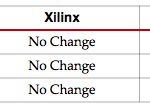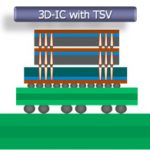You are currently viewing SemiWiki as a guest which gives you limited access to the site. To view blog comments and experience other SemiWiki features you must be a registered member. Registration is fast, simple, and absolutely free so please,
join our community today!
At IDF Brian Krzanich gave the keynote. I won’t summarize the whole thing here but just talk about one part that was something they had actually managed to keep secret ahead of time: Quark.
Quark is a synthesizable core. It uses 1/10th power of Atom and is 1/5 size. Now I am writing this, I don’t know if this is a fair comparison… Read More
GlobalFoundries has been in Singapore for a long time. Longer than GlobalFoundries has existed in fact. Chartered Semiconductor was started in Singapore in 1987 and GF acquired them in early 2010 less than a year after they were created by spinning out the manufacturing arm of AMD. When GF was started their state of the art fab was… Read More
At TSMC’s OIP on October 1st, Mentor Graphics have 5 different presentations. Collect the whole set!
11am, EDA track. Design Reliability with Calibre Smartfill and PERC. Muni Mohan of Broadcom and Jeff Wilson of Mentor. New methodologies were invented for 28nm for smart fill meeting DFM requirements (and at 20nm me may … Read More
As more people adopt high-level synthesis (HLS) they start to worry about what is the best design flow to be using. This is especially so for verification since it forms such a large part of the effort on a modern SoC. The more people rely on HLS for producing their RTL from C, the more they realize they had better do a good job of verifying… Read More
Almost without exception these days, semiconductor products face strict power and thermal budgets. Of course there are many issues with dynamic power but one big area that has been getting increasingly problematic is static power. For various technical reasons we can no longer reduce the voltage as much as we would like from one… Read More
For decades we have used a model of faults in chips that assumes that a given signal is stuck-at-0 or stuck-at-1. And when I say decades, I mean it. The D-algorithm was invented at IBM in 1966, the year after Gordon Moore made a now very famous observation about the number of transistors on an integrated circuit. We know that stuck-at… Read More
Handsets moved away from fixed architecture DSP some time ago, driven by two main factors. Fixed architecture DSP consumed too much power to get good battery life in the smart-phone era, but the consumer air interface was changing fast: W-CDMA, HSPA, WiMax, 3G, LTE (which is actually a whole ‘spectrum’ of different… Read More
With the uncertainties around timing of 450mm wafers, EUV (whether it works at all and when) and new transistor architectures it is unclear whether Moore’s law as we know it is going to continue, and in particular whether the cost per transistor is going to remain economically attractive especially for consumer markets … Read More
Microsoft Buys Nokiaby Paul McLellan on 09-02-2013 at 11:21 pmCategories: General
OK. I was wrong. Microsoft did buy Nokia’s handset business. For $7.2B, which for a company that just wrote off nearly $1B on tablets isn’t that much. Nokia is a company that had a peak valuation of $110B although it is not clear how much of that is in the deal versus out of the deal.
Details from Reuters here.
Elop is expected… Read More
One of the challenges in doing a complex analog or mixed signal design is that things get out of step. One designer is tweaking the schematic and re-simulating, another is tweaking the layout of transistors, another is changing the routing. This is not because the design flow is messed up, but rather it reflects reality. If you wait… Read More











